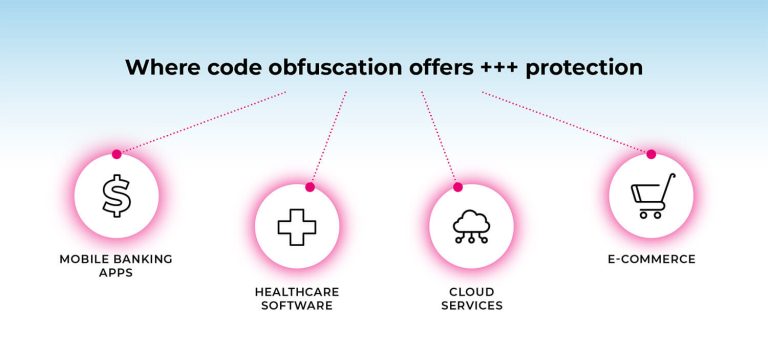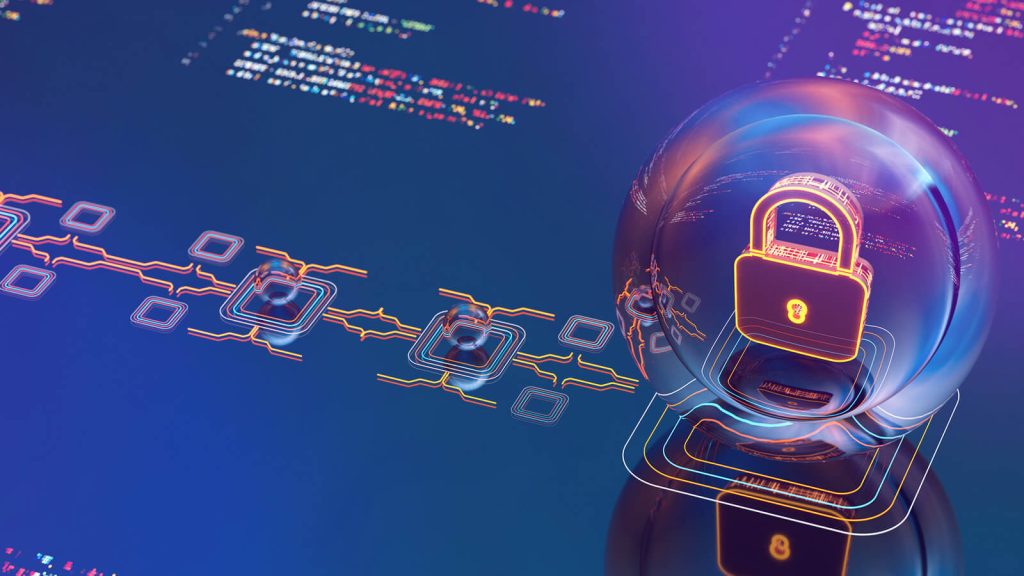Code obfuscation is like making a secret code out of computer instructions. Instead of writing code that’s easy for people to understand, it intentionally makes it tricky. This might seem strange because, usually, we want our computer programs to be easy to read and manage.
But there are special reasons for code obfuscation, and this article covers them all. In the following sections, we’ll use practical applications and insights to show you why code obfuscation is the smart thing to do in software development.
The Imperative of Better Security Measures
In the last few years, data breaches and cyberattacks have become increasingly frequent across various industries, so ensuring software is as secure as Fort Knox has never been more vital. This goes double for sensitive data, proprietary algorithms, and intellectual property.
That’s where code obfuscation comes in handy. It’s like putting an extra lock on your software. It makes it much harder for malicious actors to figure out how your software works and exploit vulnerabilities to break into or steal critical information.
Defining Code Obfuscation
Let’s break down what code obfuscation means in more concrete terms. In essence, it involves turning readable and comprehensible code into something that is challenging to interpret.
This can be done with different obfuscation techniques, like giving variables and functions weird names, adding extra code that is redundant, or mixing up the order of the code. The final outcome is code that might look confusing to a person, but a computer can still run it just fine.
Benefit #1: Extra security from complexity
The intentional complexity of code obfuscation becomes a powerful barrier to attackers for several reasons:
- Protection against reverse engineering: Reverse engineering involves taking apart a software application to see how it works. Obfuscated code is a formidable obstacle for reverse engineers, as it conceals the logic and flow of the program.
- Defense against code tampering: If attackers want to mess with your code, obfuscation makes it much trickier. Any malicious changes they attempt are more likely to disrupt the program’s functionality, which acts as an early warning system.
- Reduced attack surface: By obfuscating your code, you can hide important parts of your program. This means there are fewer potential angles for attackers to find and exploit weaknesses in a code they can’t easily understand.
- Tougher to break through: Code obfuscation adds another layer of security that attackers would have to spend a lot more time and effort to understand and mess with the obfuscated code. This should discourage most attackers, except the really determined ones.
Code obfuscation in practice
To illustrate the benefits of code obfuscation, consider these practical applications:
- Mobile app security: Mobile apps often contain sensitive information. Code obfuscation makes it tough for hackers to figure out how the app works, so they can’t easily find ways to break in and steal data.
- Cryptographic safety: When you use encryption to keep things safe, obfuscation can make sure the encryption stays strong.
- License key protection: Software often needs license keys to work properly and generate revenue. Obfuscation hides these keys so users can’t easily mess with them, which helps protect your revenue.
- Game cheating prevention: In online games, some players cheat by changing the game code. Obfuscation makes it hard for them to do that, so everyone can play fairly.
Benefit #2: Intellectual property protection
Intellectual property (IP) is the heart and soul of many businesses in the software world today. It covers everything special, from unique algorithms and proprietary code to trade secrets and valuable data.
Protecting these assets is essential to staying ahead of the competition. That’s precisely where code obfuscation comes in. It helps protect your intellectual property in at least two particular ways:
- Safekeeping proprietary code: Proprietary code refers to the unique codebase that you’ve developed in-house, which distinguishes your software from others in the market. This code, which is a significant investment, can be obfuscated to prevent others from stealing or using it without your permission.
- Complying with licensing agreements: Many software applications are subject to licensing agreements. Code obfuscation helps make sure everyone sticks to the rules by making it hard to cheat the system.
A use case of code obfuscation in action
Consider a software company that has developed an advanced image processing algorithm. This algorithm is the core feature of their flagship product. If they don’t protect it, competitors could reverse engineer and use the algorithm in their own applications, potentially eroding the company’s market share.
By using code obfuscation, this company can hide how the algorithm works. Even if someone were to gain access to the source code, the complexity introduced by obfuscation would make it exceptionally difficult to understand the algorithm’s tricks. This stops others from stealing the company’s special code and keeps them ahead in the business.
Benefit #3: Increased trust
Whether you’re developing software for consumers, businesses, or critical infrastructure, it’s vital that the people who use it and the ones who rely on it feel confident it will work well, keep their information safe, and not cause any extra problems.
Trust is a big deal in the software world. Here’s why trust matters:
- Satisfying your users: People are more likely to use and keep using software they trust. When they trust it, they have a better time using it and are more willing to stick around.
- Protecting your name: Trust can make or break the reputation of your software. Even one time when something goes wrong, like a security problem or data leak, can really hurt your brand and cost a lot of money.
- Building business relationships: If you’re making software for other businesses, trust is like the foundation of your partnerships. You need it to start and keep good collaborations going.
- Compliance: Trust also means following the rules and standards set by the industry and the law. Using code obfuscation shows you’re serious about security, which makes your reputation even better.
- Quality assurance: Using code obfuscation can also show that you really care about making great software. It’s like a sign that says you’ve tested and secured your software really well, so people can trust it.

The following are some real-world scenarios where code obfuscation fosters trust:
- Mobile banking apps: When you use a mobile banking app, you’re giving it your financial data. Code obfuscation helps protect this sensitive information, enabling users to trust the app more.
- Healthcare software: In healthcare, trust is paramount. Patients and medical professionals rely on software for sensitive medical data. Code obfuscation is like a promise that their data is safe.
- Cloud services: Trust is key with cloud services since they are used to store important stuff online. Code obfuscation keeps it all secure, so you can trust that your data won’t disappear.
- E-commerce: When you shop online, you trust the website with your personal and financial data. Code obfuscation helps keep that information safe from hackers and scams, so you can shop with confidence.
In summary
To deal with an evolving threat landscape where security and trust are constantly being undermined, code obfuscation stands as a powerful tool for ensuring your software remains reliable and respected. Think of code obfuscation as a shield that protects your intellectual property, user data, and the integrity of your software.
By making your code intentionally complex and difficult to decipher, code obfuscation keeps your unique ideas safe from prying eyes. Whether you’re creating mobile apps, healthcare software, cloud services, or e-commerce platforms, trust is paramount. Users need to feel confident that their data is secure, and code obfuscation helps provide that peace of mind.
So, remember, when it comes to building trust and protecting what matters most, code obfuscation is your ally in the world of software development. Get in touch with one of our specialists, and we can start protecting your precious code together.
If you’re interested in learning more about code obfuscation, this helpful article we’ve written explains more about the topic.





